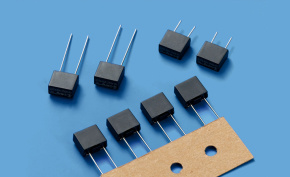The 2024 Paris Olympics have successfully concluded, and the shining "technological style" on and off the field has become a major highlight of this year's Olympics. The presentation of "digitalization" both inside and outside the Olympic venues is not only a feast for sports competition, but also a grand event of technological innovation.
The integration of technology and innovation not only enhances the competitive level and viewing experience of the Olympic Games, but also promotes the continuous development of the sports industry, providing solid support for humanity to pursue the goal of "higher, faster, and stronger".
In today's global attention to sports, technological innovations such as MEMS (Micro Electro Mechanical Systems) sensors are almost ubiquitous. MEMS sensors embedded in wearable devices such as smartwatches and fitness trackers can effectively monitor and improve athletic performance. From daily training to large-scale sports events, these small but powerful sensors can be used to monitor progress and receive real-time feedback.

In the world of competitive sports, every millisecond and every centimeter is crucial. Imagine a high jumper preparing for an international competition, constantly seeking ways to improve his jumping skills. The MEMS sensors embedded in sportswear can accurately capture the height and distance data of each jump and provide real-time feedback, helping him make immediate adjustments, optimize posture and technique.
Cyclists rely on maintaining optimal step frequency and power output to ensure optimal performance. Through MEMS sensors, they can optimize pedal efficiency and power distribution. The data collected by sensors is helpful for real-time adjustment, which not only improves overall performance but also provides a competitive advantage.
STMicroelectronics is at the forefront of MEMS sensor technology, integrating microelectromechanical systems with electronic circuits to measure various physical parameters such as acceleration, angular velocity, direction, and pressure. For example, accelerometers can calculate velocity, measure the rate of change of an object's velocity, detect specific postures, and track body movements, providing athletes with accurate and reliable data.

In competitive swimming, efficient turns may change the outcome of the competition. Accurate depth measurement is crucial for underwater challenges, and MEMS sensors play an important role in this field. For example, STMicroelectronics waterproof pressure sensors can provide real-time data on turning and depth, helping athletes optimize their performance and efficiency in water. By embedding MEMS sensors in sportswear or goggles, swimmers can monitor their performance during training.
In addition, coaches can use this data to adjust training plans and help athletes improve their performance and competitive advantage in swimming pools or open waters.
In racket sports such as tennis, table tennis, and baseball, the speed and accuracy of hitting the ball are key. The MEMS sensors embedded in the racket or bat can provide detailed data on posture and impact force, helping athletes quickly adjust and improve their hitting skills. If you want to further understand the latest developments in the field of performance monitoring, please read the article about MEMS sensors significantly improving performance to power ratio.
In contact sports such as football, impact monitoring is crucial for the safety and performance of players, as well as tracking the speed and rotation rate of the ball in the air. The high gravity accelerometer MEMS sensor embedded in the helmet can capture detailed impact data, while the fine intelligent ball tracking function enhances the viewing experience for the audience.
In addition, they can provide important information about collision force and direction, helping coaches and medical staff monitor the safety of players. These data are also important references for developing training and competition strategies. For example, if a player is severely impacted, the data can prompt immediate medical attention to ensure the player's health.
MEMS sensors have a wide range of applications and are suitable for various sports projects. Whether it's cyclists adjusting their step frequency rhythm, swimmers optimizing their underwater turns, or tennis players perfecting their swing movements, MEMS sensors including inertial measurement units (IMUs) can provide real-time data needed for immediate improvement and achieve improved performance and competitive advantage over time.
It is undeniable that MEMS sensors embedded with wearable technology are changing the landscape of competitive sports. They can provide precise performance monitoring and optimize training plans through real-time feedback. With the continuous advancement of technology, the role of MEMS sensors in improving sports performance will become increasingly significant, paving the way for future athletes.



